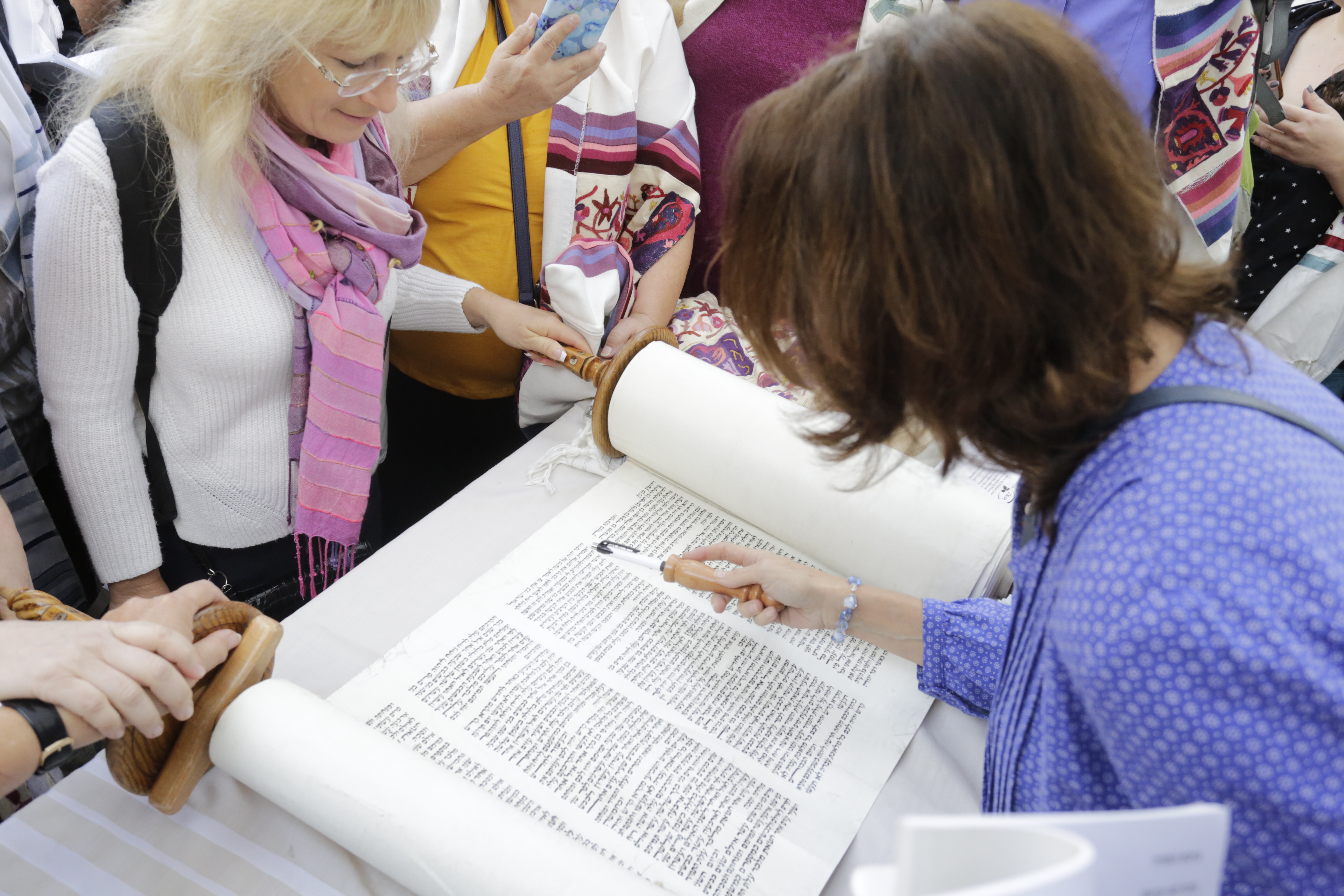By Rabbi Laura Geller is the Senior Rabbi of Temple Emanuel in Beverly Hills, California
We approached the entrance to the Kotel Plaza a little before 7:00 A.M. on Rosh Hodesh Tevet. In my bag was my tallit, the beautiful purple and blue one that was hand woven as a gift from the students and faculty at USC over 20 years ago when I completed my time there as the Hillel rabbi. Several women were in line in front of me; the security guards checking bags told them they couldn’t bring their tallitot into the Kotel Plaza. As of 6:00 A.M. that morning, a new decree had been issued by the “Rabbi of the Wall”, forbidding women from entering the plaza with Jewish holy articles like tallit and tefillin.
This week’s Torah portion continues the story of Joseph. It begins: “Vayigash eilav Yehuda… And Judah approached him (Joseph)…” The midrash (Bereshit Rabba 93:6) asks what “approach” means, what are the different strategies one might use to approach those who hold power. It offers three options: one is to approach in conciliation; the second is to approach in battle and the third is to approach in prayer.
I wanted to approach in prayer. I learned long ago of the power of tallit and kippah to help me move from the secular to the sacred, spiritual tools that begin the transformation that opens my heart to prayer. I took my tallit out and wrapped it around my neck like a scarf. When it was my turn to go through security, a guard pointed to my neck. “Does that scarf have tzizzit? Take it off. You must leave it here.” I tried to explain: “But I am coming to pray. In the mornings I pray with a tallit. This tallit is very symbolic to me—it was a gift from the students I taught that there is more than one way to be a Jew.” But as he was going through my purse and holding my kippah in his hand, he didn’t seem interested in a conversation. “You can take this, handing me the kippah, but not that tallit”
I unwrapped the tallit and left it in the pile of tallitot other women had been forced to leave behind. Four women who  wore their tallitot under their coats were able to pass through security. When they reached the women’s section of the kotel and our prayer began, they put on their tallitot, and were soon summoned by the police and told they must take them off or leave the group. Subsequently they were arrested.
wore their tallitot under their coats were able to pass through security. When they reached the women’s section of the kotel and our prayer began, they put on their tallitot, and were soon summoned by the police and told they must take them off or leave the group. Subsequently they were arrested.
There is no halachic prohibition against a woman wearing a tallit. At most the prohibition is against saying a bracha that indicates she is fulfilling a commandment. We actually have evidence in rabbinic tradition that some daughters of certain prominent rabbis wore tallit and tefillin. So why is my wanting to approach the Kotel in prayer, the way I pray, a problem for the authorities who control the Kotel? If I can’t approach in prayer, in what for me is real and authentic prayer, the only options left are to approach in conciliation or in battle.
I could approach in conciliation. I could argue that Women of the Wall have been given what we need— we are “allowed” to convene eleven times a year in the women’s sections for public prayer, as long as we move to Robinson’s Arch for the Torah service. There we can wear tallitot and tefillin; there it is possible to have women and men pray together. But Robinson’s Arch, while technically part of the Western Wall, is not the “main” Kotel, not the iconic symbol that so many Jews consider sacred. The Kotel is sacred space that should belong to all Jews. It is in fact a national monument. The problem is that government legislation has turned it into an Orthodox synagogue where public prayer can only be led by men. It disenfranchises me along with the vast majority of Jews in the world. It says that my expression of Judaism is not authentic. Conciliation means giving up my own voice and my own truth.
So the only approach that is left is battle. Women of the Wall will continue to fight the battle, not only for reclaiming the Kotel as public space, but also for all the other issues of religious pluralism that are so important. We will continue to speak truth to power, raising our voices and our prayers to challenge the Orthodox monopoly on issues of personal status: marriage, divorce, burial and conversion, and to work for parity in government funding for non Orthodox religious and educational institutions and for recognition of liberal rabbis.


As an orthodox Jew I totally support the right of omen of the wall to Pray with Talis and Tefillin and Minyan at the Kotel – However on the same coin in the name of equality (and a voidance of HYPOCRICY) I hope all supporters of The Women of the Wall will also be vocal supporters of the right of Jews to pray on the Temple Mount!